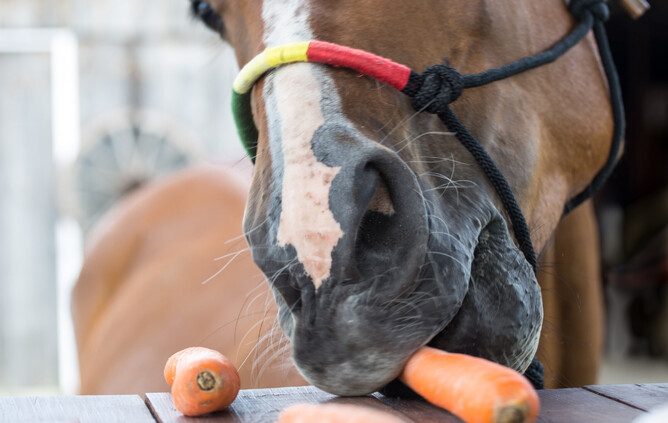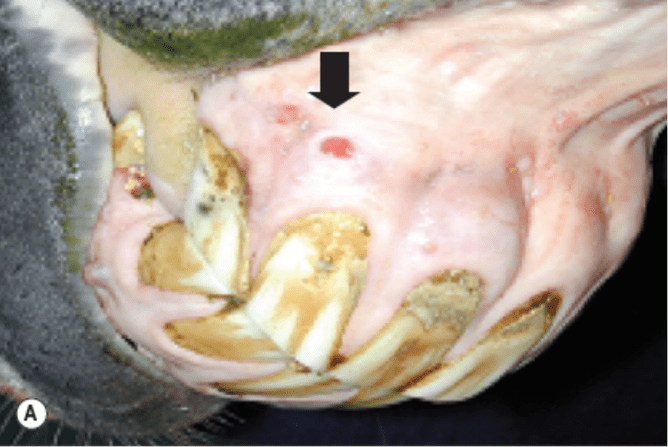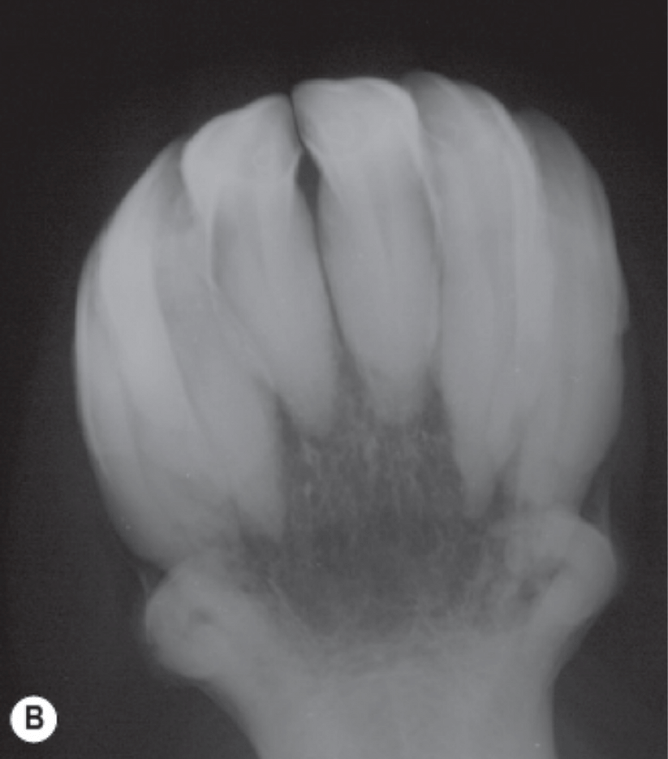What is Equine Odontoclastic Tooth Resorption Hypercementosis (EOTRH)?
Equine Odontoclastic Tooth Resorption and Hypercementosis (EOTRH) is a painful and progressive dental disease syndrome that can affect older horses. Affected horses are usually over 15 years of age. It mainly affects incisors, canines and in rare cases the cheek teeth. It usually starts on the outside incisors and progresses to the inside incisors. There are two different processes of the disease that can be seen separately from each other or can be seen together; the tooth can either resorb from the inside and/or form an abnormal amount of cells (cementum) around the root of the tooth.
Symptoms of EOTRH:
- Thickening of the incisor roots.
- Inflamed gums or retraction of the gums, with the possibility of draining tracts.
- Loose or fragile incisors.
- Abnormal amount of tartar on the incisors.
- Increased saliva production.
- Smell from the mouth.
- Not being able to bite hard feed like carrots.
We can often suspect the diagnosis of EOTRH based on the clinical signs. As mentioned above, some horses are not able to bite off a carrot with their incisors. Confirmation and the degree (resorption or enlargement of the roots) of the disease can only be confirmed with radiographs. The disease can be managed to a certain degree to make the horse as comfortable as possible with softer food and pain relief etc. However, since the condition is quite painful and progressive, and there is currently no prevention nor cure, the only therapy is to remove the affected (mostly all) incisors. Although this seems radical, complete removal of the affected teeth carries a good prognosis for an improved quality of life.
A: The incisors of this horse show enlargement of the roots under the gums and the arrow is pointing at a draining tract.
B: Radiographs of a 17-year-old pony with an abnormal amount of cells (cementum) around the roots.
Images by: Equine Dentistry, Third Edition. Section 3: Dental Disease and Pathology. Chapter 10: Equine Dental Pathology. J. Easly, P.M. Dixon and J. Schumacher, 2010.



